I have to admit that I'm something of a fan of Mike Johnson's The Online Photographer. He sometimes posts things that I find rather interesting.
Take this article on the great Formula One pilote, Francois Cevert as an example. The chain of events that led to my exploration of Tri-X, it's grain in 35mm film, and trying to digitally emulate the effect was rather long and twisted. Here's the story.
My uncle used to pass me his Road and Track magazines after he'd read them. I, too, would read them thoroughly. My favorite writer at the time was Henry Manney III. The way he wrote about racing in Europe captivated my imagination and set the basis for my desire to one day visit that far-off continent.
If memory serves, Henry Manney III nearly single handedly introduced Formula One racing to American readers and followers of motorsport. It was an exotic pastime and there seemed to be a big story to tell. Even from so far away I had a sense that the Formula One Circus was a close knit community of owners, mechanics, and drivers who's one great passion was racing.
Being a dangerous sport drivers from time to time would die. I remember when Jim Clark and later Mark Donahue were killed. And I remember when Francois Cevert crashed heavily at Watkins Glen. Even now these memories are charged with emotion. There were so many skilled drivers and my best friend, Nelson, and I enjoyed watching some of them race at the Long Beach Grand Prix and out in the desert at the Riverside Motor Speedway in Southern California.
After reading The Online Photographer, I followed the link to Richard Kelly's wonderful work. Looking at his images brought back a flood of memories. My own photographs and negatives from those days are now either recycled or in a landfill somewhere. Ugh. If only I'd known how I might feel someday about my early, wobbly, adolescent imaging works.
I met an LA Times photographer many years ago to talk about the trade and how best to approach photography. He showed me some of his work and showed me 16x20inch prints that were center mounted on 20x24inch ragboard.
I remember asking him about the grain. The overarching esthetic at the time and de rigueur in the group of photographers I used to hang out with was to make prints as grain-free as possible. This required large format cameras and slow film. Yet the LA Times photographer's work was grainy and had a certain "grit" (for the lack of a better word). They were fabulous.
What helped make them fabulous, in addition to the wonderful subject matter, was that they had all been made using a 35mm camera that was loaded with Tri-X and processed in D-76. And very importantly the grain was absolutely sharp edge to edge on the print.
Lucky for me the photographer gave me an important hint to the secret for keeping negatives flat in the negative holder in an enlarger (without having to resort to Newton Ring inducing glass negative carriers). Working out the rest of the secret in my own darkroom is what helped me land a job printing black and white photos for well-known photographers in Hollywood. I worked at the Crossroads of the World print shop that Samy's Camera used to own and run.
All of this happened during the 1960's, 70's and early 1980's before I returned to the University of California, Irvine to pursue computer science, engineering, and a "real" job in aerospace.
Coming to the present and recalling the beauty of grainy small negative black and white images, I set about working out yet another secret in trying to match the effect in digital. It turns out it's all pretty simple and straightforward. Here is the process I use.
Take this article on the great Formula One pilote, Francois Cevert as an example. The chain of events that led to my exploration of Tri-X, it's grain in 35mm film, and trying to digitally emulate the effect was rather long and twisted. Here's the story.
My uncle used to pass me his Road and Track magazines after he'd read them. I, too, would read them thoroughly. My favorite writer at the time was Henry Manney III. The way he wrote about racing in Europe captivated my imagination and set the basis for my desire to one day visit that far-off continent.
If memory serves, Henry Manney III nearly single handedly introduced Formula One racing to American readers and followers of motorsport. It was an exotic pastime and there seemed to be a big story to tell. Even from so far away I had a sense that the Formula One Circus was a close knit community of owners, mechanics, and drivers who's one great passion was racing.
Being a dangerous sport drivers from time to time would die. I remember when Jim Clark and later Mark Donahue were killed. And I remember when Francois Cevert crashed heavily at Watkins Glen. Even now these memories are charged with emotion. There were so many skilled drivers and my best friend, Nelson, and I enjoyed watching some of them race at the Long Beach Grand Prix and out in the desert at the Riverside Motor Speedway in Southern California.
After reading The Online Photographer, I followed the link to Richard Kelly's wonderful work. Looking at his images brought back a flood of memories. My own photographs and negatives from those days are now either recycled or in a landfill somewhere. Ugh. If only I'd known how I might feel someday about my early, wobbly, adolescent imaging works.
I met an LA Times photographer many years ago to talk about the trade and how best to approach photography. He showed me some of his work and showed me 16x20inch prints that were center mounted on 20x24inch ragboard.
I remember asking him about the grain. The overarching esthetic at the time and de rigueur in the group of photographers I used to hang out with was to make prints as grain-free as possible. This required large format cameras and slow film. Yet the LA Times photographer's work was grainy and had a certain "grit" (for the lack of a better word). They were fabulous.
What helped make them fabulous, in addition to the wonderful subject matter, was that they had all been made using a 35mm camera that was loaded with Tri-X and processed in D-76. And very importantly the grain was absolutely sharp edge to edge on the print.
Lucky for me the photographer gave me an important hint to the secret for keeping negatives flat in the negative holder in an enlarger (without having to resort to Newton Ring inducing glass negative carriers). Working out the rest of the secret in my own darkroom is what helped me land a job printing black and white photos for well-known photographers in Hollywood. I worked at the Crossroads of the World print shop that Samy's Camera used to own and run.
All of this happened during the 1960's, 70's and early 1980's before I returned to the University of California, Irvine to pursue computer science, engineering, and a "real" job in aerospace.
Coming to the present and recalling the beauty of grainy small negative black and white images, I set about working out yet another secret in trying to match the effect in digital. It turns out it's all pretty simple and straightforward. Here is the process I use.
- Desaturate a digital image
- Using "Curves" and "Exposure" - set the shadow and highlights to taste (remembering to keep as much information in the highlights as possible - ie: don't clip the whites)
- Using "Curves" - grab the mid-point of the curve and raise it a bit (to achieve a rather accurate film emulation "look")
- Add "film" grain (Gimp, Capture One, etc all seem to have film grain functions)
Looking at the results feels to me as if the images without the emulation film grain were made with a very large format film camera. The highlights and shadows are creamy and wonderful. This holds true even in images originally made using a Canon A640 Point and Shoot that shot jpegs only.
The images with emulation film grain, on the other hand, have that small negative enlarged print "look" about them. The effect is really quite striking. I can see where the effect can be useful to underscore a certain photographic aesthetic.
[Large Format Film "look" on the left. Small Format Film "look" on the right. You'll need to click on each image to see the effect.]
[Large Format Film "look" on the left. Small Format Film "look" on the right. You'll need to click on each image to see the effect.]
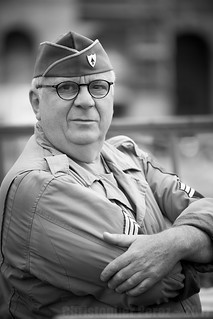
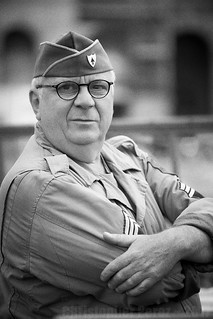

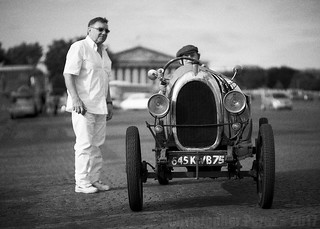
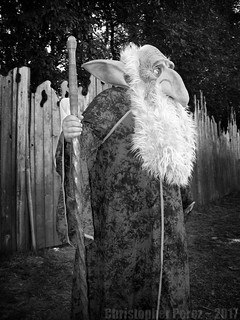
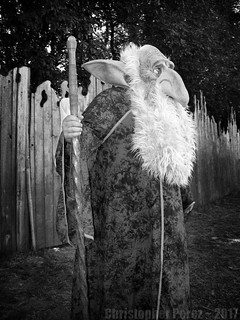
No comments:
Post a Comment